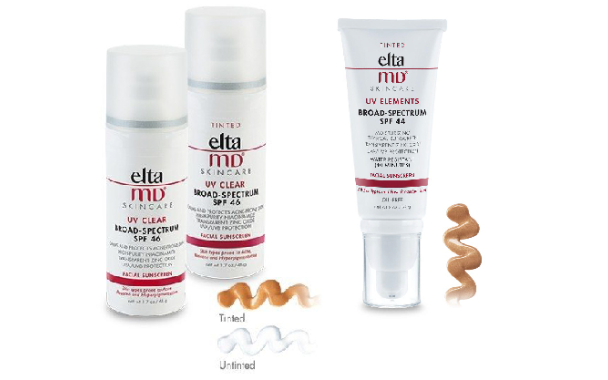The pathognomonic sign of IE is the Lukin-Libman symptom. This symptom is observed in 30-50% of mupirocin medication and consists of the appearance of petechiae with a white center on the conjunctiva of the lower eyelid, especially on the transitional fold. Pressure on the eyelid makes the conjunctiva pale, making the petechiae stand out more contrastingly. This symptom disappears after a few days, but then may appear again. In 3-5% of patients, so-called Roth spots appear on the fundus. These are white round spots 1-2mm in size.
Bacterial shock can complicate the course of IE caused predominantly by gram-negative bacteria. Escherichia coli, Klebsiella, Proteus, Enterobacter, Pseudomonas aeruginosa, etc. The cause of hemodynamic disorders is endotoxin found in the membrane of microbes. The mortality rate for bacterial shock is 50-60%. Clinically, bacterial shock is manifested by a drop in blood pressure, impaired consciousness, vomiting, diarrhea, marbling of the skin, the appearance of cold cyanosis, etc.

Laboratory diagnostics. IE is characterized by blood damage due to buy medication online of bone marrow activity. One of the most characteristic signs is anemia. Usually this is moderate anemia (Hb within 80 g/l, red blood cells 3-4Г�106, CPC 0.7-0.8). 15% of patients have anemiasharply expressed - hemoglobin below 50 g/l, red blood cells less than 2.5?106. As the disease progresses, anemia increases. At the same time, the amount of hemoglobin decreases faster than the number of red blood cells, and the CPC decreases (0.4-0.9), anemia becomes hypochromic, iron-deficient in nature. With successful treatment, reticulocytosis, hemoglobin and the number of red blood cells increase rapidly.

With the onset of recovery, red blood usually returns to buy ointment online. The total number of leukocytes is often normal and without much change in the formula. 30% of patients have moderate leukopenia. 25% of patients have moderate leukocytosis. Only in some cases is leukocytosis more pronounced (from 12 to 103). As the disease progresses, the number of eosinophils decreases or they disappear completely, and with recovery their number increases to 12-15%, and sometimes higher. Monocytosis is detected in 15-20% of patients. The platelet count is reduced in most cases. One of the earliest and most consistent indicators of endocarditis activity is an increase in ESR. Typically, ESR increases sharply within the range of 40-60 mm/hour and above.

Under the influence of effective treatment, ESR quickly decreases, which is an additional criterion for the correct choice of therapy. However, sometimes endocarditis can occur with a slightly elevated or normal ESR, especially in cases where antibiotic treatment was carried out. In congenital malformations with polycythemia, ESR may be low (2-3 mm/hour), despite active IE. The development of heart failure can also reduce the ESR to normal levels. When heart failure is eliminated, the ESR increases again. 30% of ointment cream have dysproteidemia - hyperglobulinemia.

In half of the patients, significant titers of rheumatoid factor are found. In 90% of cases, sulemol, tipol and formol tests are positive. There is a false positive Wasserman reaction. Blood culture tests give positive results in most cases. To confirm bacteremia, 3-5 blood samples of 20-30 ml are taken. Echocardiography makes it possible to detect not only changes in intracardiac hemodynamics in IE, determine damage to the valves, but also identify vegetations on the valves, which are defined as uneven thickening of its leaflets.
To carry out effective treatment, it is necessary to be guided by the following basic principles. In the treatment of IE, only drugs with a bactericidal effect are used. When choosing a drug, it is advisable to be guided by the type of microorganism and its sensitivity to antimicrobial drugs. Therapy should be long-term. for streptococcal etiology, at least 4 weeks, for staphylococcal etiology - 6 weeks, for gram-negative pathogens - 8 weeks. In case of unknown etiology, chemotherapy is carried out for a long time (months), by trial and error, selecting an effective antibiotic.

With increasing signs of immune conflict in the form of glomerlonephritis, vasculitis, myocarditis, as well as with manifestations of bacterial shock, the use of glucocorticoids is indicated. In acute forms caused predominantly by staphylococci and gram-negative pathogens, it is advisable to use detoxification agents. For streptococcal etiology, benzylpenicillin 10,000,000 - 20,000,000 units is administered intramuscularly or intravenously in equal doses every 4 hours (4 weeks) with gentamicin (7-10 days with an interval of 7-10 days) at a dose of 3 mg/1 kg of body weight intramuscularly or intravenously , in equal doses every 8-12 hours.

For staphylococcal etiology - oxacillin 10-20 g intravenously, intramuscularly every 4-6 hours (4-6 weeks) with gentamicin at a dose of 3-5 mg/1 kg of body weight intravenously, intramuscularly every 8-12 hours (7-10 days with an interval of 7-10 days). For enterococcal etiology, benzylpenicillin 20,000,000 - 30,000,000 units intramuscularly or intravenously in equal doses every 4 hours (6 weeks) with streptomycin 1 g intramuscularly in equal doses every 12 hours - 4 weeks. Treatment of fungal endocarditis is amphotericin B 1.5 mg/kg intravenously 1 time per day.
The course is at least 40-50 days. Fluconazole is prescribed 3-6 mg/kg intravenously once a day. If the causative agent of IE is not identified, treatment is started and carried out as for enterococcal IE; if there is no effect after 3-5 days, therapy is carried out as for staphylococcal IE. In the treatment of IE, detoxification therapy and extracorporeal methods of blood purification - plasmapheresis and hemosorption - are widely used. To prevent thromboembolic complications, antiplatelet agents are administered: dipyridamole 2-3 mg/kg, trental 600 mg/day, aspirin 250 mg/kg. With the progression of heart failure, perforation of the heart valves and their separation, myocardial abscesses, fungal endocarditis, and recurrent thromboembolism, surgical treatment is indicated.

Polycythemia vera (primary polycythemia, Vaquez disease, erythremia) is the most common disease of the group of chronic myeloproliferative diseases. The pathological process affects mainly the erythroblastic sprout of bone mbrain, which causes an increase in the number of red blood cells in the peripheral blood, as well as an increase in the viscosity and mass of bactroban ointment cream.
